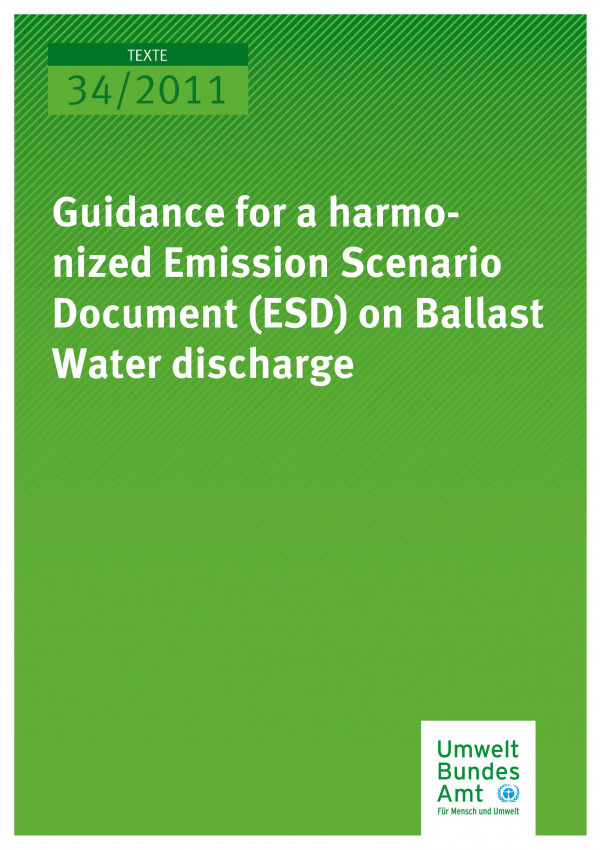With ballast water in ships, marine organisms are transported around the globe and to environments on which they may have adverse effects (e.g. displacement or even elimination of indigenous species). In order to prevent this world-wide distribution, the International Maritime Organisation (IMO) approved the ‘International Convention for the Control and Management of Ships' ballast water and sediments’ (Ballast Water Convention) in 2004. This convention aims at a management of ballast water to avoid the transfer of organisms around the world. Consequently, a variety of technologies have been developed to remove living organisms from ballast water before it is discharged into the environment. Subsequently, any toxic substance that has served as biocide in the process or was formed during the treatment will be released to the environment when the large amounts of ballast water are discharged. Hence, before ballast water treatment measures are approved by the competent authorities, an assessment of the potential isk for the environment needs to be carried out.

Chemikalien, Wasser
Guidance for a harmonized Emission Scenario Document (ESD) on Ballast Water discharge
Reihe
Texte | 34/2011
Seitenzahl
85
Erscheinungsjahr
Autor(en)
Andreas Zipperle, Jos van Gils, Dr. Bert van Hattum, Prof. Dr. Susanne Heise
Sprache
Englisch
Forschungskennzahl
363 01 205
Verlag
Umweltbundesamt
Dateigröße
4341 KB
Preis
0,00 €
Druckversion
nicht lieferbar
Als hilfreich bewertet
286




